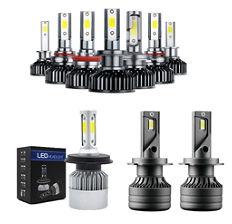Problems needing attention in the maintenance of automotive electrical appliances
When addressing automotive electrical maintenance, it is essential to focus on precision, safety, and adherence to technical specifications. Below is a structured summary of key considerations for maintaining generators, ignition systems, and starters, along with broader best practices:
1. Generator Maintenance
Correct Connections:
Ensure terminals labeled "+" or "B+" (armature) are securely connected to prevent intermittent disconnections, which can cause voltage spikes damaging rectifier diodes.
Verify polarity to avoid reverse connections that could harm diodes.
Post-Repair Checks:
Test generator output to ensure it meets specifications (e.g., voltage/current levels).
Inspect belt tension for proper charging efficiency.
Safety Practices:
Turn off the ignition immediately after engine shutdown to prevent battery drain through the generator’s field coil.
Use diodes with correct ratings during replacements to avoid premature failure.
2. Electronic Ignition System Grounding
Ground Integrity:
Ensure all ground points (high-voltage wires, sensors, igniter) are clean, tight, and free of corrosion. Use dielectric grease to protect connections.
Troubleshooting:
Prioritize inspecting ignition components (coil, spark plugs, distributor) for issues like high-speed misfires or hot-engine failures.
Check for proper insulation on high-voltage wires to prevent arcing.
Component Quality:
Use OEM or equivalent parts to maintain system reliability and tolerances.
3. Starter Maintenance
Wiring Specifications:
Replace damaged wires with the correct gauge (cross-sectional area) to handle high starter currents. Undersized wires cause overheating and voltage drops.
Protective Measures:
Install dust covers to prevent debris ingress, which can lead to internal abrasion or shorts.
Solenoid and Motor Inspection:
Check solenoid contacts for wear and test starter motor brushes/commutator for wear during maintenance.
General Best Practices
Safety Precautions:
Disconnect the battery before repairs to avoid shorts/shocks. Use memory savers for ECU settings if needed.
Diagnostic Tools:
Use multimeters to measure voltage drops across connections, identifying high resistance points (e.g., at starter terminals during cranking).
Environmental Considerations:
Work in clean, dry environments to prevent contamination, especially when handling sensitive components.
Technical Resources:
Consult vehicle-specific wiring diagrams and service manuals to address manufacturer variations in wiring and components.
Advanced Considerations
ECU Sensitivity:
Avoid voltage surges during repairs by using surge protectors or ensuring proper disconnection procedures to protect modern electronics.
Systematic Diagnostics:
Perform systematic checks (e.g., resistance tests, continuity checks) to isolate faults efficiently.
By integrating these practices, maintenance personnel can enhance reliability, extend component lifespan, and adapt to the evolving complexity of automotive electrical systems.
 High Beam vs Low Beam: Ultimate Safety Guide & LED Upgrade Tips
High Beam vs Low Beam: Ultimate Safety Guide & LED Upgrade Tips
 Problems needing attention in the maintenance of automotive electrical appliances
Problems needing attention in the maintenance of automotive electrical appliances
 Top 5 Benefits of Upgrading to LED Headlight Bulbs for Your Car
Top 5 Benefits of Upgrading to LED Headlight Bulbs for Your Car
 Quality Control
Quality Control

